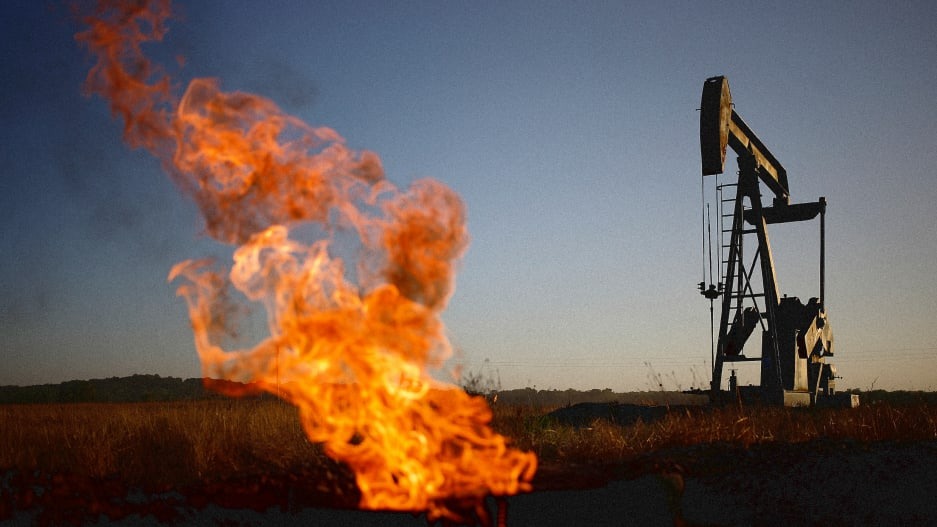- | 9:00 am
It would take less than 3% of Big Oil’s profits to slash methane emissions
A new report from the IEA says $100 billion from the entire oil and gas industry could cut methane leaks by 75%.

In 2022, oil and gas companies took in a record amount of money. Four companies alone—Chevron, ConocoPhillips, Exxon, and Shell—saw a reported $1 trillion in combined sales, a total larger than the GDP of Switzerland or Saudi Arabia. Meanwhile, methane—a greenhouse gas more potent than carbon dioxide that’s emitted during oil and gas production—also increased in 2022. The global energy industry released nearly 135 million tonnes into the atmosphere last year, according to the International Energy Agency.
Oil and gas companies, along with governments around the world, have previously pledged to reduce methane; the Oil and Gas Climate Initiative, which Chevron and Exxon are part of, committed in 2018 to slash methane emissions by a fifth by 2025, and just last year announced a goal to cut “fugitive” methane emissions, caused by leaks, to net zero by 2030.
Not enough is happening to cut those emissions, the IEA reported in its recent Global Methane Tracker report—but oil and gas companies could take a big step to slash methane emissions and it would cost only a fraction of their recent income. (Gas and oil income was bolstered last year by the energy crisis accelerated by Russia’s invasion of Ukraine.) According to the IEA, methane emissions can be reduced by 75% with existing technologies—things like leak detection and repair programs, or installing new devices like compressors that capture gases that accumulate in storage tanks, which are currently vented into the atmosphere—at a cost of about $100 billion for the whole industry.
That $100 billion investment would be less than 3% of the global oil and gas industry’s profits last year—which hit $4 trillion, according to the IEA.
“Our new Global Methane Tracker shows that some progress is being made but that emissions are still far too high and not falling fast enough—especially as methane cuts are among the cheapest options to limit near-term global warming,” IEA executive director Fatih Birol said in a statement. “There is just no excuse.”
It’s still necessary to cut carbon emissions to avoid the worst of global warming, but methane emissions are also crucial. Though methane doesn’t last as long in the atmosphere as carbon dioxide, it is incredibly potent while it’s there: Methane has more than 80 times the warming power of carbon dioxide. That means “methane sets the pace for warming in the near term,” as the Environmental Defense Fund has put it.
The IEA doesn’t estimate company-level information, so it’s not clear how much, say, Chevron would have to pony up, but that $100 billion figure would be an industry-wide investment. And the industry is large; the Oil and Gas Climate Initiative, for example, has 12 current members, including giants like ExxonMobil, Chevron, and Shell, which represent just 30% of global oil and gas production.
The IEA says one of the most impactful steps a country can take to reduce its methane emissions is to stop non-emergency flaring and venting, which occurs when oil and gas companies choose to burn methane, or simply release it into the atmosphere, on a “permanent or semipermanent basis during production.” Companies say they sometimes need to flare for safety reasons, to reduce pressure, but experts say flaring often isn’t necessary, and is essentially a squandered resource.
Some of that captured methane could also be brought to market. Oil and gas production results in around 260 billion cubic meters of methane lost into the atmosphere every year; 75% of that could be retained and brought back to the energy market. “That captured methane would amount to more than the European Union’s total annual gas imports from Russia prior to the invasion of Ukraine,” per the IEA.






































